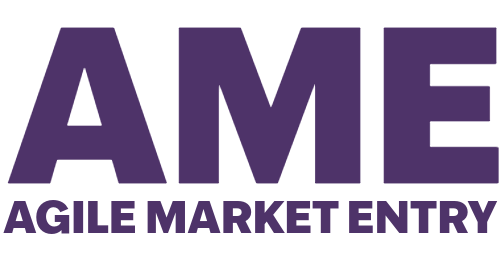
A new product’s launch is always exciting, whether for a startup or an established company. The product launch timeline often begins after years of intensive product development and is a time of high expectations and great opportunity. It is also the most challenging stage of the product life cycle and presents the greatest risk.
For an established company, it can be pivotal, spurring new growth – or, all too often, sullying a great brand. For a startup, it is the difference between success and failure. The greatest opportunity – and consequently, the greatest risk – is for those products (and services) that are truly disruptive, i.e. – a novel technology and/or opening of a new market.
The Innovation Death Spiral
All too often, the new product launch marks the beginning of what I call the Innovation Death Spiral. It’s an all-too-familiar story that goes something like this:
A big media splash accompanies FDA approval – and market expectations are running high, since for years, everything has been building toward this moment. Leadership establishes goals arbitrarily (lacking historical data upon which to base them), and the organization gets busy executing the launch plan. Marketing loads the plan with untested tactics (also lacking historical data). The Sales VP gets busy hiring salespeople.
Salespeople miss quotas. The company misses targets. The executive team cranks up the pressure, spurring the sales team to double down on their efforts and close, close, close! New marketing strategies, special price promotions, and other scattershot tactics ensue – but a quagmire of failure to meet expectations persists.
Eventually, the executive team is replaced, and optimism gives way to disillusionment.
Under heightened pressure, management teams often retreat to the safety of what they know, rather than risk trying new strategies. They tend to press on with what’s not working rather than stepping back, assessing the underlying causes, and endeavoring to craft a new, more effective approach.
Two Critical Missteps in a New Product Launch Strategy
The primary goal of the launch is to reach scale (the upward inflection in the revenue curve) as efficiently as possible with respect to both time and capital, but two critical missteps often spark the innovation death spiral.
- Premature Scaling
Sales and marketing leadership jump into executing the launch plan, precipitating a huge increase in the sales and marketing spend – typically millions for a startup, and often tens of millions for established companies. This is based on the expectation of reasonably executing a launch plan rooted in critical assumptions around the target market, an effective marketing plan, lead generation, the sales cycle, sales team onboarding, clinical outcomes, user behavioral change, product adoption and acceptance, and more.
While some of these assumptions are uncovered during clinical trials, market research, and customer discovery, most still need to be borne out. And the more your product is a market disruptor, the more deeply your product launch strategy is based on untested critical assumptions. The net effect is that even an expertly constructed launch plan will operate inefficiently. Your marketing and sales efforts will fail to produce the desired results, squandering precious time and capital.
- Wrong Product Life Cycle Stage
The product life cycle has 4 distinct stages (see image with the first 3 stages).
- Introduction
- Growth
- Maturity
- Decline
While revenue drives valuation at scale and efficiency drives valuation at maturity, product launch teams often operate (mostly inadvertently) as if they are in the growth stage and use revenue as their primary metric of success. However in the introduction stage of the product launch timeline, revenue does not drive value. A pervasive focus on driving revenue at launch prevents the learning required to discover a proven business model and repeatable sales process to reach scale. It unwittingly drives the product launch toward failure.
I watched this scenario play out a few years ago with a client:
The company launched with some early market success, so they hired an experienced Sales VP who built a national sales team. This drove up the sales and marketing burn rate overnight – but within a quarter or two, they were missing their targets. Ultimately the management team was replaced. Eventually, we helped them get back on track, and the company was acquired – but for less than optimal returns, due to the additional funding required to “go big and go fast”.
What every product needs to reach scale is a repeatable sales process (RSP). And the RSP is what every professional sales organization needs to operate effectively. So what is the remedy?
Slow Down to Speed Up: Adapting the Product Launch Timeline
Rather than executing a predetermined launch plan, the appropriate framework for managing through the introduction stage (from launch to scale) is a discovery and learning process that distills the optimal RSP. This is not a conventional sales framework for operating at scale. A “market entry”sales process, as distinguished from all conventional sales model.
When implementing this market-entry-based strategy, a product launch timeline will advance through the following stages:
- A controlled launch with a coordinated sales and marketing burn while the proven business model and RSP are discovered and codified.
- As the RSP is revealed, it is appropriate to pace the sales and marketing efforts (and spending) to match the progress. At this stage, it is an iterative process.
- As confidence is gained in a proven RSP – demonstrated by consistent and reliable market results – a product will transition from the introduction to the growth stage.
- It is then appropriate to increase the sales and marketing effort to accelerate revenue, whereupon the results (revenue growth) will be commensurate with the increase in spending.
During the controlled launch, the purposeful “slowing down” of the sales and marketing burn conserves critical capital resources. Because sales and marketing teams cannot operate effectively without a sound RSP, using this market entry strategy will lower your early burn rate while also making the resulting revenue stream more efficient, reliable, and sustainable. I know this is counter to commonly held beliefs and practices, but it works.
I helped found and lead the sales and marketing effort for a genomics specialty CRO in the early 2000’s. While our competitors made grandiose claims, raised 10x more capital than we did, had much larger sales and marketing organizations, and were darlings of the media; we started slowly, methodically applying the principles and practices of market entry to forge strong relationships, sustainable growth, and a reputation as the market leader.
We reached profitability within 2 years, and – unlike our competitors, who were acquired for less than twenty-five cents on each dollar of their initial capitalization – our company was acquired for 20x return on investment and is now a leader in the genomics services industry.
Controlled Launch Market-Entry Strategy: 5 Primary Benefits
- Lower (or controlled) burn rate in the early stages of your product launch timeline, appropriate to navigating more efficiently through the introduction stage of the product life cycle
- Achieving market scale (the inflection point of the revenue curve) in less time
- Less stress and more success within your sales and marketing teams
- Greater customer satisfaction
- Ultimately greater enterprise valuation
Chris Morrison is the founder of ViaVerus and creator of Agile Market Entry sales framework for launching disruptive tech. Chris has spent most of his career in healthcare, life science and Medtech; AME works in all marekts.

